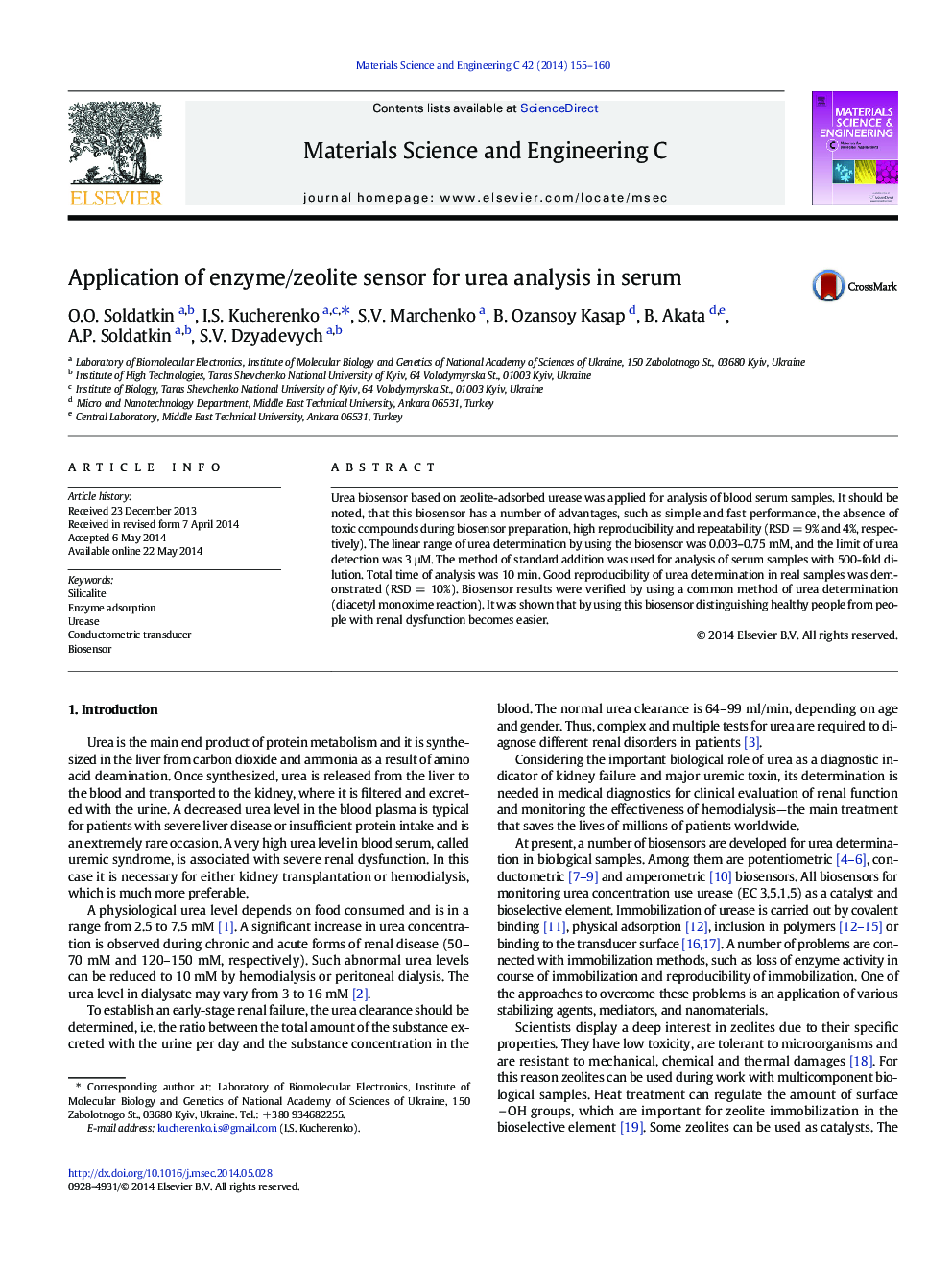| Article ID | Journal | Published Year | Pages | File Type |
|---|---|---|---|---|
| 1428623 | Materials Science and Engineering: C | 2014 | 6 Pages |
•The enzyme/zeolite sensor was created by urease adsorption on silicalite.•The sensor is notable for its simple and fast performance and high reproducibility.•Urea content was successfully measured in samples of blood serum.•Accuracy of urea determination was 10%; total time of analysis was 10 min.•Biosensor results correlated well with the traditional method of urea determination.
Urea biosensor based on zeolite-adsorbed urease was applied for analysis of blood serum samples. It should be noted, that this biosensor has a number of advantages, such as simple and fast performance, the absence of toxic compounds during biosensor preparation, high reproducibility and repeatability (RSD = 9% and 4%, respectively). The linear range of urea determination by using the biosensor was 0.003–0.75 mM, and the limit of urea detection was 3 μM. The method of standard addition was used for analysis of serum samples with 500-fold dilution. Total time of analysis was 10 min. Good reproducibility of urea determination in real samples was demonstrated (RSD = 10%). Biosensor results were verified by using a common method of urea determination (diacetyl monoxime reaction). It was shown that by using this biosensor distinguishing healthy people from people with renal dysfunction becomes easier.
Graphical abstractFigure optionsDownload full-size imageDownload as PowerPoint slide
